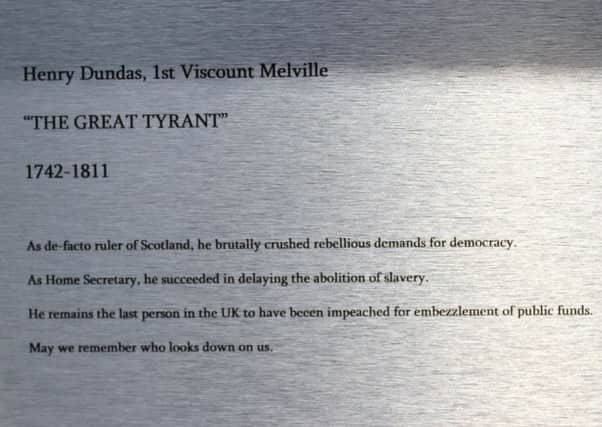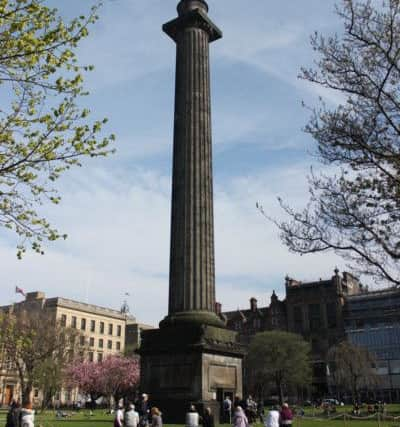'˜Great Tyrant' Henry Dundas' record exposed by campaigner


Henry Dundas, 1st Viscount Melville (1742-1811), was the most powerful Scottish politician of his day and dubbed “the uncrowned king of Scotland” but among other things he delayed the abolition of slavery and was the last British politician to be impeached.
Green activist Adam Ramsay paid £60 to have a plaque specially engraved, spelling out Melville’s deeds, and glued it to the door at the foot of the 140ft monument one afternoon.
Advertisement
Hide AdAdvertisement
Hide AdCouncil staff came and removed it the same day. Now Mr Ramsay, 30, who lives in nearby Dublin Street, has launched a petition asking for a permanent plaque to be added to the monument acknowledging the “full brutality of what he did”.


The petition explains: “Henry Dundas, Viscount Melville, was known in his day as the Great Tyrant. As Home Secretary, he ensured the transatlantic slave trade was allowed to continue; he used Black Watch troops to enforce the Highland Clearances, and he crushed movements for democracy.”
Mr Ramsay said: “When you start a petition to the council you have to say if you have tried to solve the problem in another way - so I can say ‘Yes, I glued a plaque to the monument but it was taken down’.”
He said he was prompted to get his plaque made after hearing Alex Salmond give the Thomas Muir memorial lecture last summer about the great 18th century Scottish radical, who had led the movement for democracy in Scotland. He asked the former First Minister whether statues to people like Melville – whose nephew ordered Muir’s transportation to Australia – should be removed .
Advertisement
Hide AdAdvertisement
Hide AdMr Ramsay said Mr Salmond had argued statues to villains should be left, but bigger ones built to real heroes.


Melville notoriously amended Wilberforce’s anti-slavery bill to make abolition “gradual”.
After he deployed the Black Watch against rebellious Highlanders, it was reported almost every village in the North of Scotland burned an effigy of him.
His career came to an end in 1804, when he was impeached for financial mismanagement, though he was narrowly acquitted.
Advertisement
Hide AdAdvertisement
Hide AdMr Ramsay said Dublin’s statues included important figures from the Irish independence movemeny. “In Edinburgh they’re still largely Victorian imperial figures.


“I’m not saying you should go around Edinburgh tearing down statues. There is an important history there
“I certainly wouldn’t want to see anything destroyed, but there is a question about what we do with our past.
“The most shocking thing to me about Dundas is he was the Home Secretary who prevented the slave trade being abolished for another 30 years.
“You don’t have to think he is a hero to have a statue – but let’s be honest about it.”